If the media agrees on one thing, it’s that it will beg to differ. So it was at the launch of the BMW Z8, in 2000. After driving it for the first time, Autocar concluded, ‘Hard to think of a surer recipe for success’. Shortly after, evo was scathing to the point that it asked, ‘Why did BMW build this car?’.
Who was right?
Before slipping behind the wheel and attempting to answer that question, from the comfortable perspective of 23 years of told-you-so hindsight, let’s rewind the VHS tape to 1993, and a glitzy weekend of fine wines, tasting menus and executive backslapping, as the BMW board gathered to pay its collective best wishes to Eberhard von Kuenheim, the departing chief executive of BMW.
Kuenheim was an engineer by training, and took the reins of BMW in 1970, transforming it from a company numbering 23,000 staff, to one with more than 70,000 employees by the time of his departure, and moulding it into the giant ‘premium player’ we know today.

The venue for the farewell was the Chateau de la Messardiere in St Tropez, a 19th century chateau with five-star elegance and rooms that go for several thousand pounds an evening, today. Nestled in the hills, about a 15 minute stroll from the waters of the Mediterranean, the ‘thank you’ weekend included a range of historic BMWs on display, including a 507 from the late ‘50s.
Over a glass of the very finest Dom Perignon champagne, Bernd Pischetsrieder – who was to succeed Kuenheim in the top job – and Wolfgang Reitzle, who led product development and had assumed he would be recommended for the top job by Kuenheim, walked around the 507, ran a hand over its curves and slid down into the driver’s seat, before concluding that BMW should build a modern interpretation of the rare roadster (just 252 were made).
Even before the first meeting had been held or a memo circulated, the Z8 was a passion project, with all the positives and negatives that brings. After all, it takes a brave soul in product planning or sales and marketing to stand up and announce to the two most important people at BMW: you’re stupid and you don’t know what you’re doing.
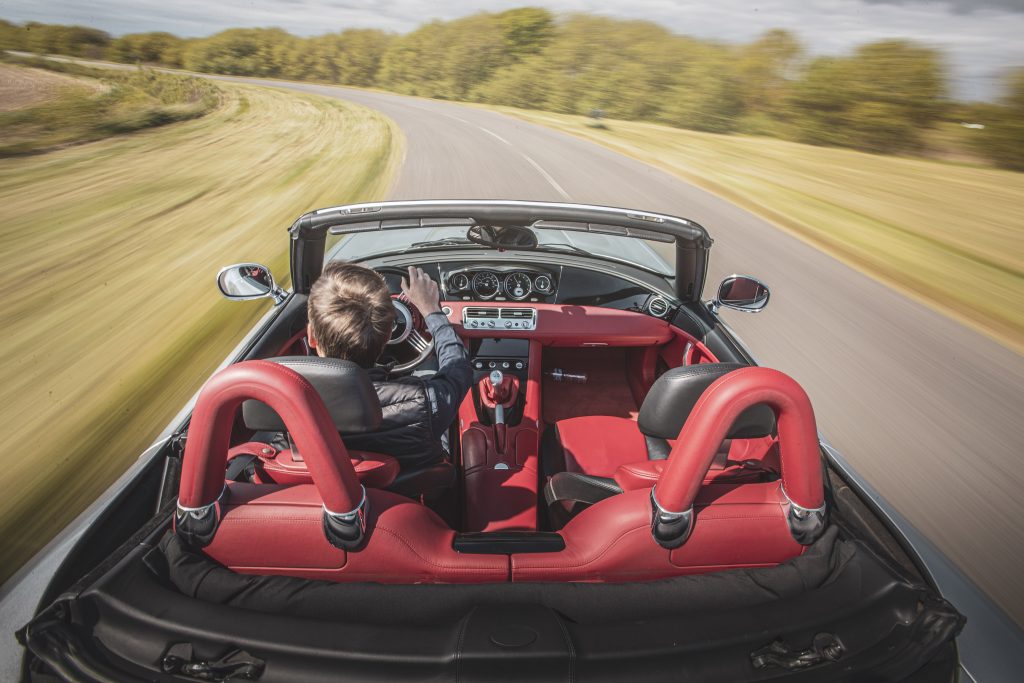
When Chris Bangle, BMW’s design director got the nod to start work on the 507-inspired project, it was Henrik Fisker who volunteered. As Fisker would later recall, “So I remember the design chief came back and said, ‘Would anybody like to take a stab at this? You know, do a model on what the 507 could look like today’. Similar to how a Porsche 911 evolved over time, how would the 507 look if we produced it today? So I start working on this project, and instead of making the car kinda look like a 507, I decided to make something entirely new that still had heritage. It was summertime, and everyone was on vacation and I volunteered to stay behind and model it as a ‘no promises’ design exercise.
“I only had five engineers working with me. It wasn’t even officially a project, so we had absolutely no restraints. That’s why the design could be so pure, because it didn’t go through the traditional channels,” adds Fisker. “When we showed it to the board they immediately green lit it without really knowing how we were going to make it. We had to create a whole new platform, which was very exciting as that gave me an opportunity to keep the proportions of the car. It was just decided that this was going to be the ultimate BMW at the time.”
Reitzle was right that an upmarket brand like BMW needed a flagship car like the Z8. At the time of the weekend in St Tropez, those members of the board concerned with such things would have been only too aware that drivers seeking luxury trinkets were turning to Aston Martin, Ferrari and even Mercedes, with its SL.
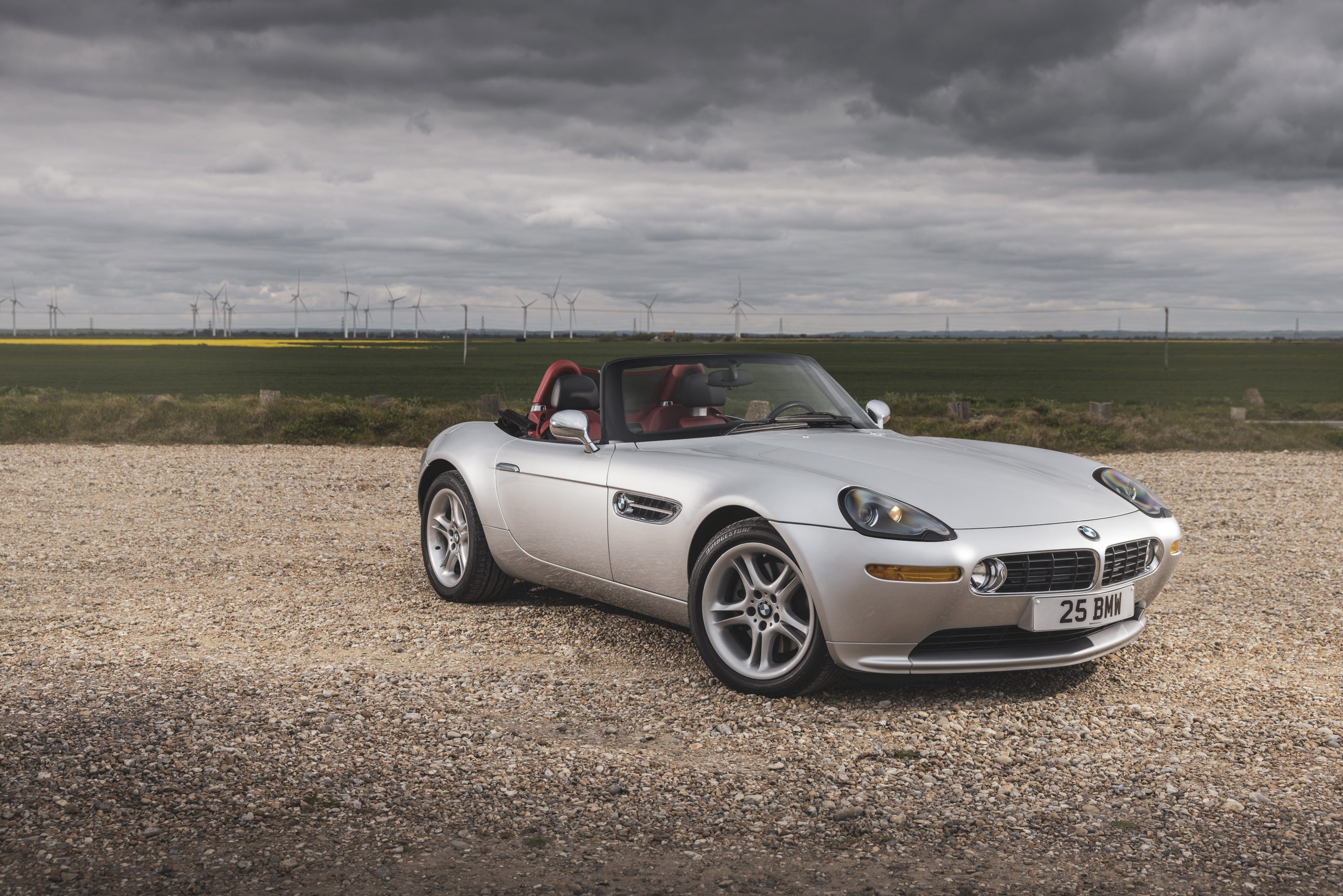
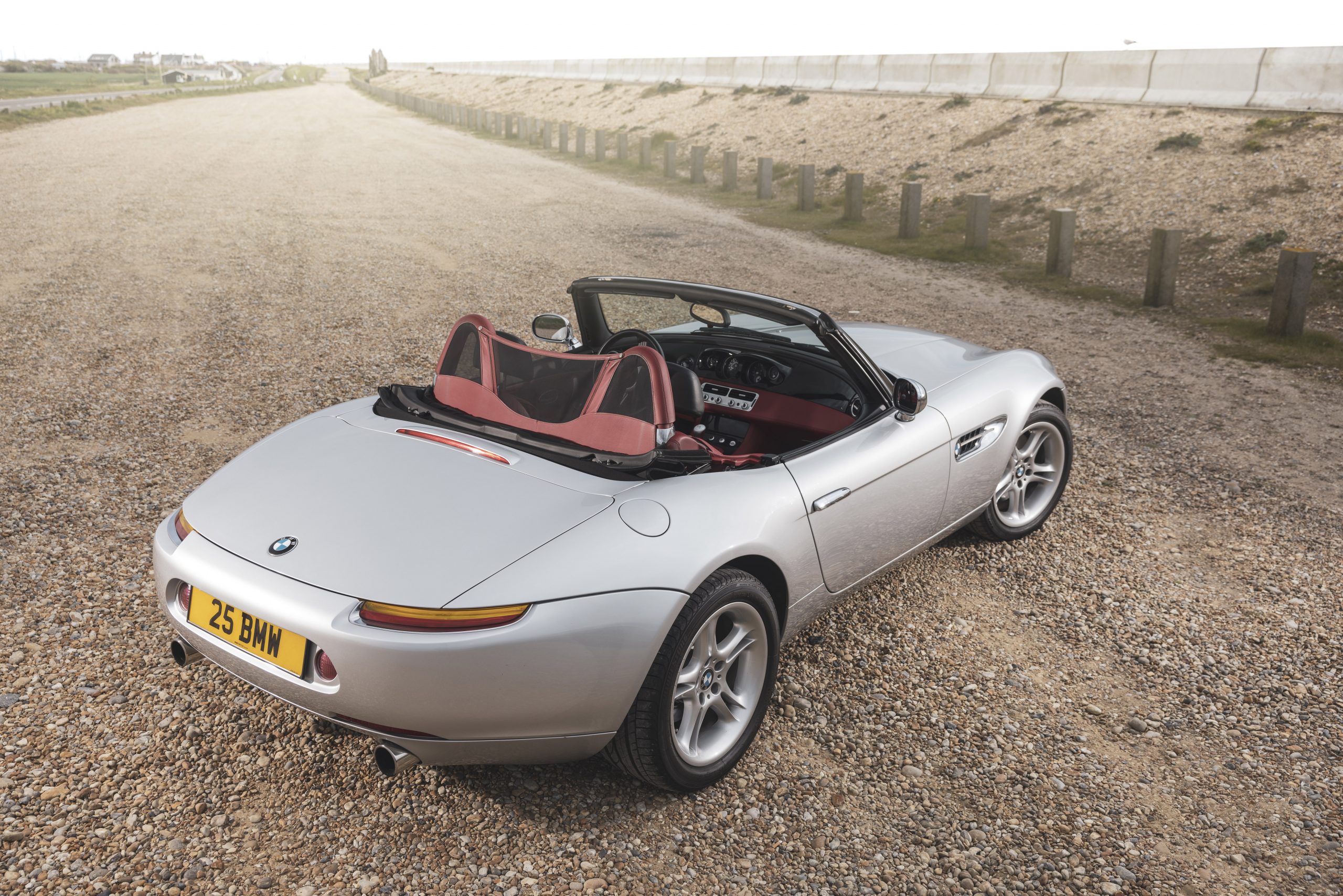
The absence of a platform that Fisker alluded to was solved in much the same way that Lotus and Renault went about creating platforms for their Elise and Spider. A bespoke aluminium chassis, made using large, extrusion-pressed beams between which sat high-strength aluminium panels, was married to aluminium bodywork, while much of the suspension (multi-link at the rear) was also made from the same material.
To this, BMW fitted the 5-litre V8 from the E39-generation M5, plus its six-speed manual Getrag gearbox (but not the limited-slip differential) and added big brakes from the 750i V12. The roof was electrically powered (but had to be manually pulled closed for the final seal) and, because it only had a plastic rear window, it folded away oh-so-neatly behind the roll-over bars. Throw in one of the most striking interiors this side of the then-new Audi TT, plus no small amount of chrome-covered bling, and it’s little wonder BMW felt confident enough to charge £80,000 when it was sold as a left-hand drive-only-model in the UK.
With a kerbweight of 1585kg, it was said to weigh 150kg less than the M5 saloon. All well and good, but that’s only slightly less than a V12-powered DB7 Vantage Volante (1622kg) and some way behind the (2+2 but six-cylinder) 911 Carrera Cabriolet (1395kg).
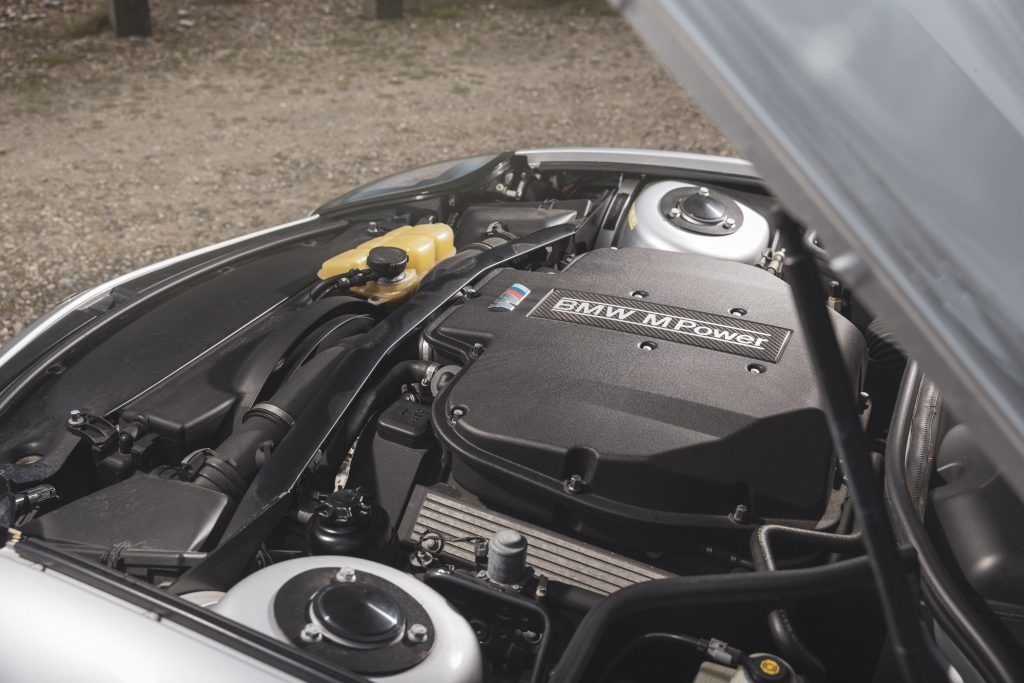
Needless to say, the retro flavour of the Z8’s design proved divisive. Some loved BMW for celebrating one of the greatest-looking sports cars of all time; others criticised the company for failing to showcase the innovative aluminium construction with an equally modern look. As ever, it’s subjective, but while out and about with the Z8 you see here, from BMW UK’s heritage fleet, the attention, camera phones and comments suggest that this is a rarely-seen car that people can’t get enough of.
The first time I approach the Z8, it’s 6.30am on a Sunday and I’m off to the most recent Bicester Scramble event. You can draw your own conclusions, but for what it’s worth, I think the design has aged better than that its contemporaries. Its rivals – even a Ferrari 360 Spider – have a mass-market vibe about them. The Z8 in contrast feels like the boutique product it was, and with little more than 100 in the UK, seeing one in the wild is an occasion.
In the same way that its rarity somehow skews your view of it, it seems to skew values. A concours example of a Z8 is worth an average of almost £200,000, according to the Hagerty Price Guide. The very best DB7 Vantage Volante is about £50,000, a 911 Carrera Cabriolet of the same vintage half again. Even the best Ferrari 360 Spider is around £70,000 to £80,000, based on a scan of the classifieds. Whether you bought a Z8 back in the day as a thing to enjoy driving, or a speculative purchase, it has dramatically outperformed its peers when it comes to any cold, calculated definition of return on investment.
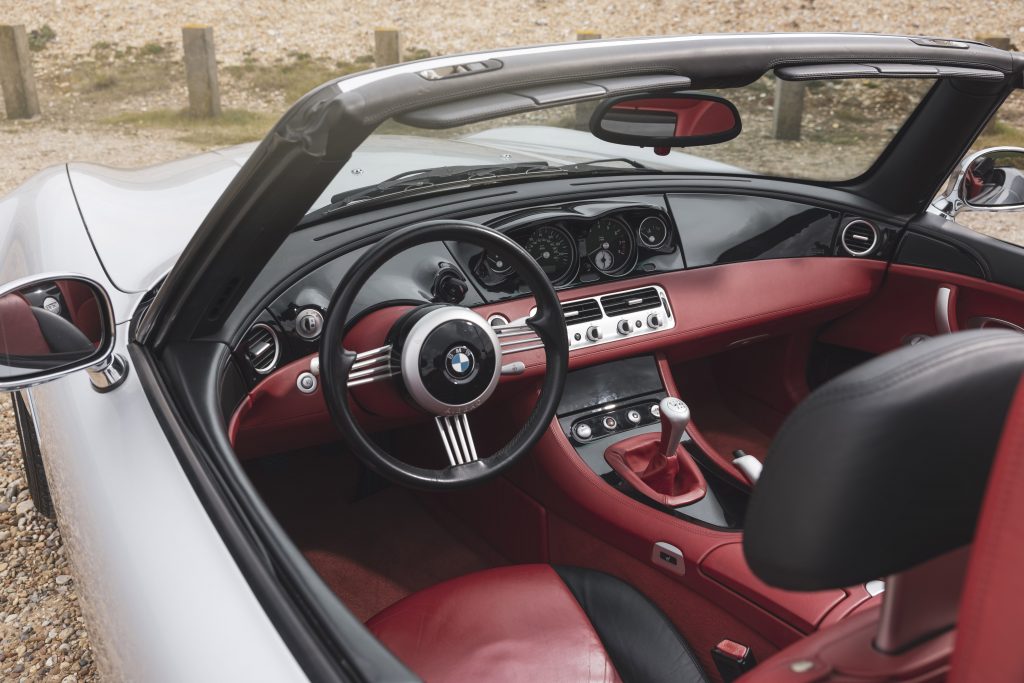
But what of the return that comes from enjoying a Z8? The key slides into an ignition barrel that’s placed where you’d expect a rev counter to sit, a starter button is just below this, while the rev counter, speedo, fuel and water temp dials are in the centre of the dashboard. Pretty much everything you can see and touch in the cabin is bespoke to the Z8, and as you fiddle around with the switchgear it’s difficult to imagine how the project ever broke into the black for BMW. Set against the piano-black finish throughout the cabin you could be forgiven for thinking that you could pluck a chord on the steering wheel’s harp-string-like, thin alloy spokes.
Thankfully, the seating position of the left-hand drive Z8, and pedal arrangement, is good, so there are no problems getting comfortable, even if that expansive bonnet feels daunting at first, especially as you edge the £200,000 machine out of a driveway or t-junction.
The V8 initially feels like a pussycat, pulling smoothly and eagerly from less than 1000rpm, even in sixth gear, but as the revs build so the Z8’s character changes. It is far more vocal than the M5 ever was, sitting somewhere in the middle ground between a TVR Griffith and Chevrolet Corvette – especially with the roof down as you wind it past 3000rpm and venture toward the 7000rpm red line – and the floor-hinged throttle response is a delight when in Sport (frankly, Sport should be the default setting).
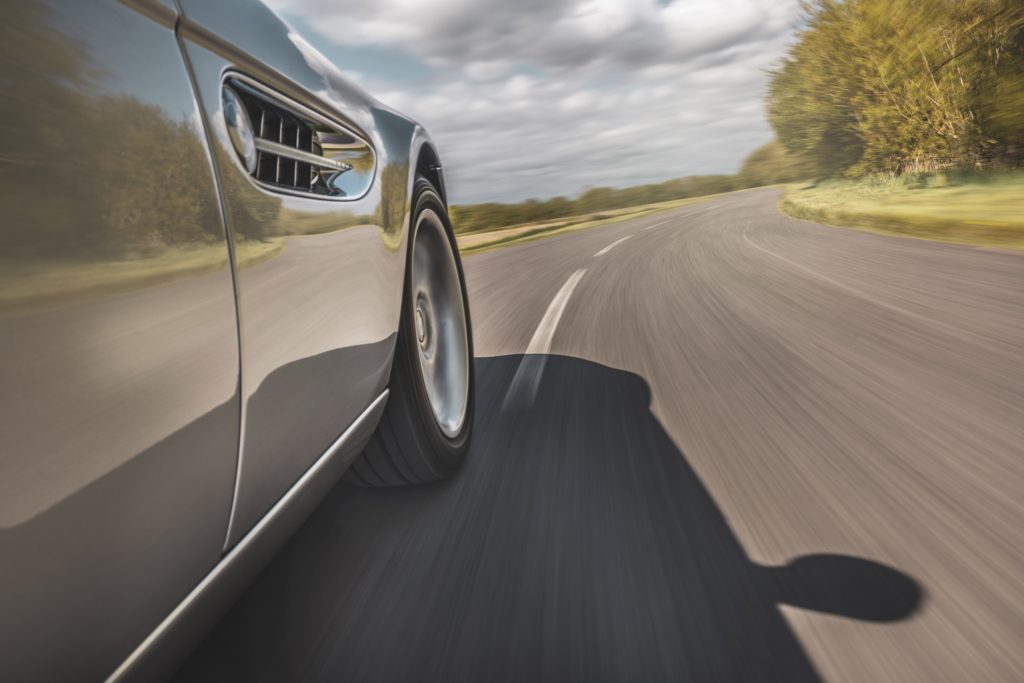
And boy oh boy is it fast. When evo ran the numbers on a Z8, in late 2000, it hit 60mph in 4.8 seconds and 100mph in 11.1, while its in-gear acceleration was equally impressive. Once past 4000rpm the engine is really singing, but even when pottering through a village the rumble from the standard exhaust will put a smile on your face.
Where the Z8 falters is its low to medium-speed ride. It doesn’t feel settled until you’re really motoring, or on a smooth surface. Yet this is despite the structure being terrifically rigid and flex-free, and is no doubt in part due to run-flat tyres.
Find an elusive stretch of smooth road, as we did, switch off the DSC – which you don’t have to rely on as there’s enough feel to complement the copious traction – and you have to carry a lot of speed to push the wide, 245 and 275 tyres past the limit of adhesion. Then it becomes a game of trust as you feel your way through body roll, grip and slip, play around with the throttle to try and balance the chassis, and then pin it to the floor to unsettle the back in a way that should come naturally to a V8-powered, rear-wheel drive roadster.
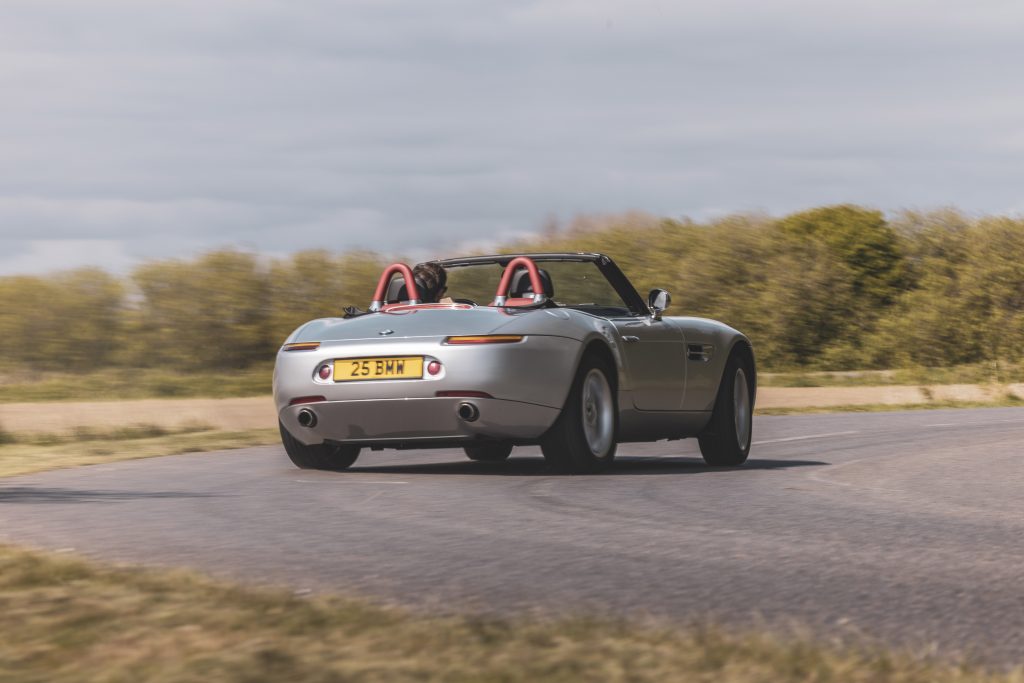
It doesn’t quite come naturally, though. Sometimes the tyres grip, sometimes the inside wheel spins up, sometimes both will let go and – for a fleeting moment – the big Z8 comes alive. But finding that sweet spot is frustratingly difficult in a car with such an exotic specification. It hints that, because of the nature of the project, the Z8 didn’t get the level of fine-tuning that had been lavished upon the M5 and imminent E46 M3.
On fast, open and smooth roads, such as I encountered across Oxfordshire at 7am on a Sunday, it is a truly glorious thing that brightens your day despite its flaws. It’s also – as mundane as this may sound – surprisingly practical, with a comfortable cabin, plenty of stowage space and a properly-useful size boot. And to be able to arrive at an event such as the Bicester Scramble and see the reaction it receives from car enthusiasts suggests there are about 100 drivers in the UK who, hopefully, realise just how lucky they are to be custodians of such a car.
It might have its flaws, but by swerving the usual due diligence and research and development processes, Bernd Pischetsrieder and Wolfgang Reitzle brought the world something that it otherwise may never have seen. For that, surely, we should be grateful.
Read more
Driver error: Buying a BMW M3 E30 on reputation alone was madness
The BMW M5 E39 may be even hotter than we thought
Mighty Minky: After 30 years the Aston Martin Virage 6.3 is still the real deal























Most Z8 owner drivers have replaced the run flats with Pilot Sports. Transformational.